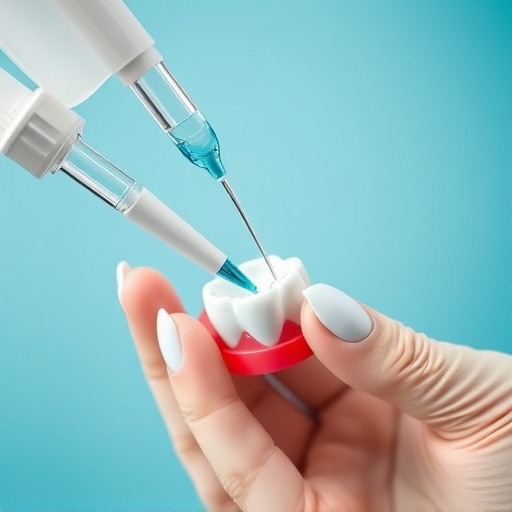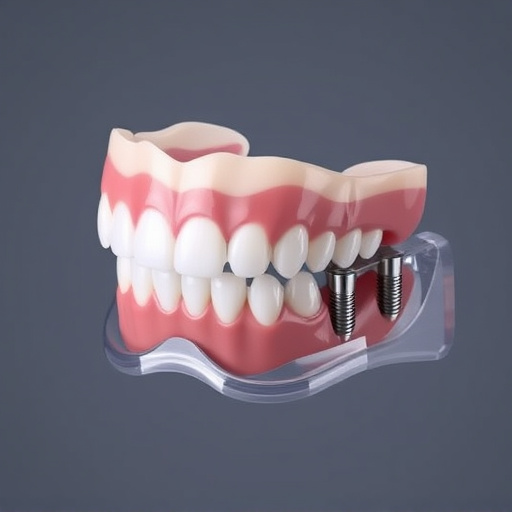Bone grafting treatment is a specialized dental procedure that restores and regenerates lost jawbone tissue, critical for successful dental implant placement. After assessing bone loss, dentists insert autogenous, allogenic, or synthetic graft materials to stimulate bone growth over several months. This enhances jawbone strength, provides stability for long-term solutions like crowns or dentures, and boosts patients' confidence in their smile and chewing ability. Regular oral exams monitor jawbone health, enabling early detection of bone loss that could impact implant feasibility. Bone grafting not only prevents facial aesthetic issues but also offers a permanent remedy for a robust, healthy smile, especially important in children's dentistry.
“Bone grafting treatment is a revolutionary procedure gaining traction in dental care. This advanced technique offers a solution for enhancing jawbone strength and support, crucial components for successful dental implants. Understanding bone grafting involves grasping how it utilizes a patient’s own cells to promote bone regrowth. This comprehensive overview explores the process, benefits, and recovery, shedding light on why it’s becoming an indispensable tool in oral reconstruction.”
- Understanding Bone Grafting Treatment: A Comprehensive Overview
- The Role of Jawbone Strength and Support in Dental Implants
- Process, Benefits, and Recovery: Unlocking the Potential of Bone Grafting
Understanding Bone Grafting Treatment: A Comprehensive Overview

Bone grafting treatment is a specialized procedure designed to restore and regenerate bone tissue in areas where bone loss has occurred, primarily due to tooth extractions or other dental conditions. This advanced dental technique involves the surgical placement of a bone graft material into the jawbone socket, aiming to promote new bone growth and create a sturdy foundation for dental implants or other restorative treatments.
The process begins with careful assessment by a qualified dentist or oral surgeon who will determine the extent of bone loss and identify the most appropriate grafting material, typically autogenous bone (from the patient’s own body), allogenic bone (from a donor), or synthetic alternatives. Following the extraction of any damaged teeth, the graft is strategically placed and secured within the socket, fostering a biological response that stimulates bone regeneration over several months. This not only enhances jawbone strength but also ensures stability for long-term dental solutions like crowns, bridges, or dentures, effectively improving overall oral health and functionality. Moreover, bone grafting treatment plays a pivotal role in family dentistry, enabling patients to regain confidence in their smile and chew with ease.
The Role of Jawbone Strength and Support in Dental Implants

The strength and support of the jawbone are paramount when considering dental implants, as it serves as the foundation for these artificial teeth. In many cases, especially after wisdom tooth removal or routine oral exams where bone loss may occur due to absence of teeth, a robust jaw structure is crucial for successful implant placement. Bone grafting treatment plays a pivotal role here, addressing any deficiencies in the jawbone to ensure it can withstand the forces exerted by chewing and speak properly. This process involves the strategic placement of bone material to stimulate new growth, thereby enhancing the overall strength and stability required for long-term dental implants.
Regular oral exams and dental cleanings are not just preventive measures against tooth decay; they also monitor the health of your jawbone. Early detection of bone loss or deterioration can prompt necessary interventions like bone grafting before it impacts implant feasibility. This proactive approach ensures that your jaw is prepared to support new implants, enhancing both the longevity and success rate of these advanced dental solutions.
Process, Benefits, and Recovery: Unlocking the Potential of Bone Grafting

Bone grafting treatment is a surgical procedure designed to unlock the potential of your jawbone for strength and support. This process involves the insertion of bone material, often taken from another part of your body or a donor source, into areas where bone loss has occurred. Over time, this grafted bone integrates with your natural jawbone, regenerating its structure and promoting new blood vessel growth to enhance healing.
The benefits of bone grafting treatment are multifaceted. By restoring the jawbone’s density and volume, it provides a solid foundation for dental implants, ensuring long-term stability and functionality. This is particularly crucial in children’s dentistry, where maintaining proper oral health through regular dental cleanings can prevent bone loss due to tooth gaps or missing teeth. Furthermore, bone grafting improves facial aesthetics by preventing the sinking of the jawline, a common occurrence when bone loss goes untreated. Unlike temporary solutions like tooth repair, bone grafting offers a permanent remedy that facilitates a robust and healthy smile.
Bone grafting treatment plays a pivotal role in enhancing jawbone strength and support, which is essential for successful dental implants. By understanding the comprehensive overview of this procedure, its benefits, and recovery process, patients can make informed decisions. Bone grafting not only improves osseointegration but also provides a solid foundation for long-lasting dental restorations, ensuring both functionality and aesthetics. This advanced treatment option offers hope and a reliable solution for those seeking to restore their oral health and confidence.














